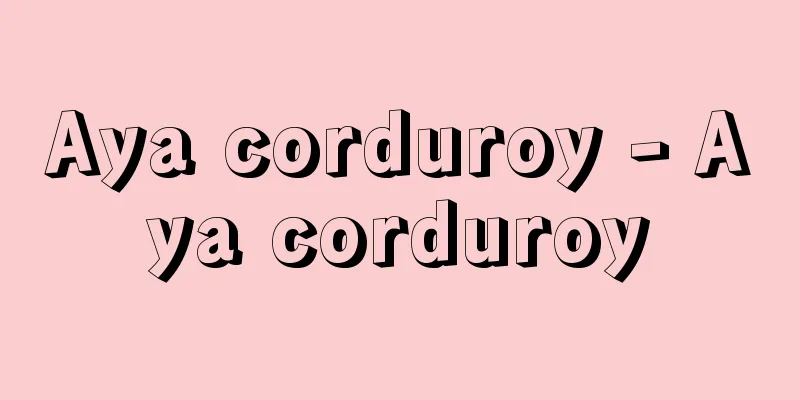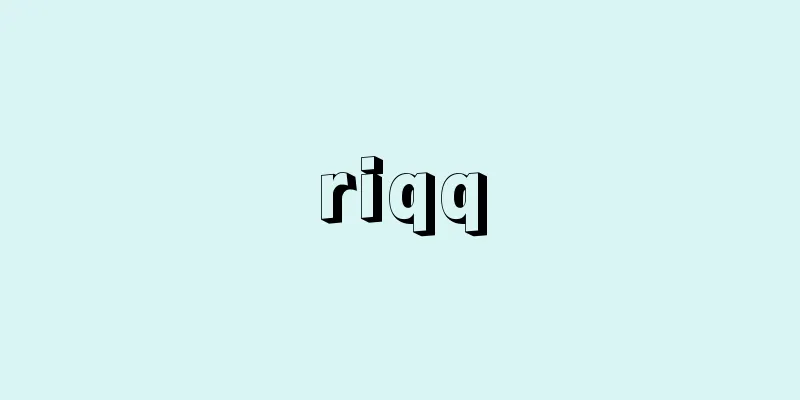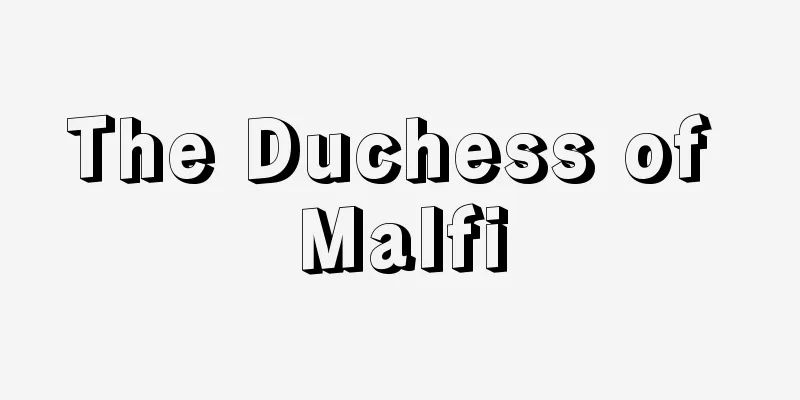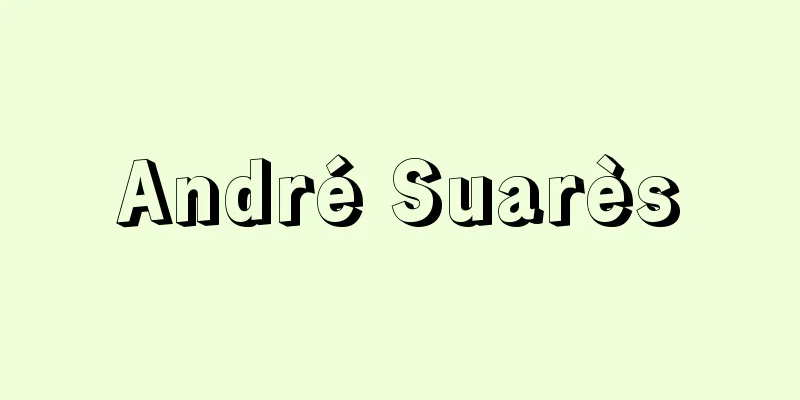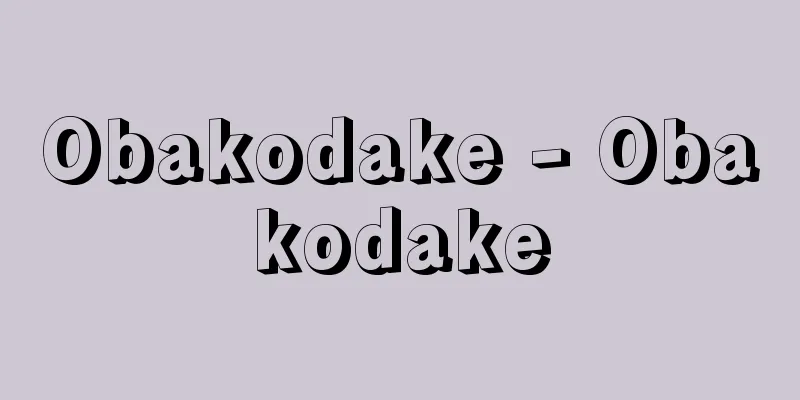Croatia - Republic of Croatia (English spelling)
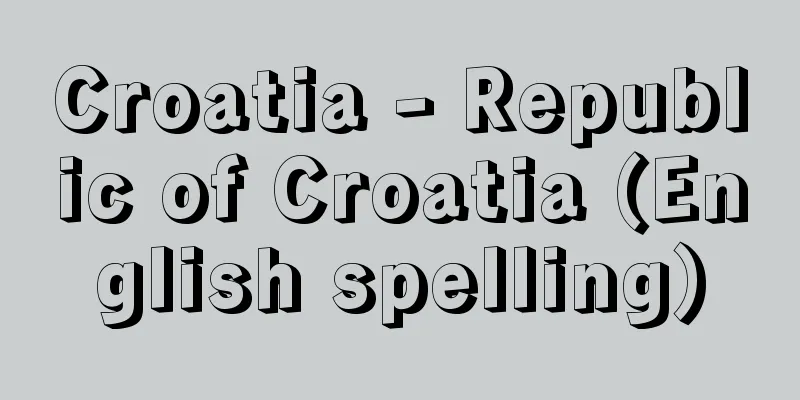
|
A republic located in the Balkan Peninsula in southeastern Europe. It faces the Adriatic Sea. Its official name is the Republic of Croatia. In Croatian, it is called Hrvatska. It was one of the six republics that made up the Socialist Federal Republic of Yugoslavia (former Yugoslavia), but declared independence in June 1991. After that, a civil war broke out between the Serbs and Croats in the republic who opposed the independence, but it was quelled in 1992 with the mediation of the United Nations. It joined the United Nations in May 1992. Its area is 56,538 square kilometers, and its population is 4,437,460 (2001 census), 4,440,000 (2006 estimate). Its capital is Zagreb. Based on topography and climatic conditions, the region is divided into three parts: the Mediterranean region (Istria, the Dalmatian coast, and the Adriatic islands), the mountain region (the Dinaric Alps), and the Pannonian region (including the fertile plains of the Danube, Drava, and Sava rivers inland). [Kazuko Urushibara] Nature and GeographyThe inland region has a continental climate, with corn, wheat, and sugar beets growing on the plains of the Pannonia region, and rye and oats growing on the hills. Dalmatia has a Mediterranean climate, where olives, figs, and grapes are cultivated, producing good quality wine. The limestone areas of this region were destroyed by marble mining during the Roman period, and it is said that the recovery of vegetation was further delayed by goat grazing there. In winter, the dry, cold wind Bora blows from the passes of the Dinaric Alps behind the region toward the Adriatic Sea. Senj on the Adriatic coast is known as an area that is particularly susceptible to the strong Bora winds that blow down from the passes. The name Dalmatian, a dog that has been settled in this region in large numbers since ancient times, comes from the Dalmatian region. [Kazuko Urushibara] historyCroats settled in the upper Sava River area in the mid-7th century. They were generally strongly influenced by the Frankish Kingdom, and accepted Roman Catholicism as a religion. In 925, Tomislav (reigned 910-928), a chieftain, declared himself "King of Croatia" and founded the first unified state. The medieval Kingdom of Croatia continued for about 200 years after that. P. Krešimir IV (reigned 1058-1074), who ruled the kingdom in the late 11th century, is known as a hero in Croatian history. He also controlled Dalmatia, and his rule is called the Golden Age. However, in 1102, Hungary completely conquered Croatia, and the Kingdom of Croatia collapsed. It remained under Hungarian rule until 1527. After that, it was ruled by the Ottoman Empire for a time, but was under the control of the Habsburg Empire (effectively Hungary) until 1918. For just four years from 1809, Napoleon loosely ruled the region as the "Illyrian Provinces." Croatian national consciousness, which had grown during this period, developed into the Illyrian Movement in opposition to Hungarianization. During the 1848-1849 revolution, the Croatian army led by Jelačić opposed the Hungarian revolutionary army, seeking greater autonomy for Croatia. In 1867, the Habsburg Empire was reorganized into the Austro-Hungarian Empire (Austro-Hungarian Dual Empire) in the Austro-Hungarian Treaty of Peace between Austria and Hungary, and the "Nagodba" (Pact) was concluded between Hungary and Croatia as a supplement to this. As a result, Croatia was formally recognized as equal to Hungary within the Hungarian Empire, but in reality Hungarian supremacy was maintained. Croatian discontent grew even stronger, and there were movements calling for complete autonomy for Croatia and for the unification of the South Slavs within the empire. After World War I, in 1918, the Kingdom of Serbs, Croats and Slovenes (renamed the Kingdom of Yugoslavia in 1929) was established as a unified South Slavic state. [Yoshihiro Shiba] Croatia in YugoslaviaThe King of Serbia became the king of the new state, and the Serbian political elite occupied the center of the state, forming the "Kingdom of Serbs, Croats and Slovenes." Croatia rebelled against the central government, promoting anti-Serbia and decentralization. This "Croatian problem" became the biggest problem in Yugoslavia between the two world wars. In 1928, a heated debate in the Kingdom's parliament over whether to use Cyrillic (Russian alphabet) used in Serbia or Latin alphabet used in Croatia for minutes led to a Serbian member shooting and killing Radić, the leader of the Croatian Peasant Party. This incident prompted the King to declare a dictatorship in 1929 with the aim of ending the "Croatian problem." However, this did not solve the "Croatian problem," and Croatian dissatisfaction continued. In the late 1930s, as the international situation became increasingly tense, stabilizing the country became an urgent issue, and efforts were made to resolve the "Croatian problem." In 1939, the "Sporazm (Agreement)" was signed between the Royal Government and the Croatian Peasant Party. As a result, the Croatian Autonomous Province was established with Zagreb as its capital. The Autonomous Province was a vast territory that included Croatia, Slavonia, and Dalmatia, which were considered to be Croatian territories, as well as part of Bosnia and Herzegovina, and came to have a population of 4.4 million, about one-third of the population of the Kingdom of Yugoslavia. Furthermore, in April 1941, the Axis forces, including Nazi Germany, invaded Yugoslavia, dividing it and occupying it. During this process, the "Independent State of Croatia," a puppet state of Germany, was established, and its territory became part of the "Croatian Autonomous Province" plus all of Bosnia and Herzegovina. This was roughly the same area as the largest territory of the medieval Kingdom of Croatia, and was seen as the realization of a long-held dream of many Croats. However, the fascist group Ustasha, which came to power in the "Independent State of Croatia", implemented racist policies similar to those of Hitler, and not only suppressed Jews and Roma (Gypsies, a nomadic ethnic group originating mainly from Northern India and living in Central and Eastern Europe), but also Serbs, whom they considered to be outsiders. With the withdrawal of German troops, the "Independent State of Croatia" collapsed, and was liberated by partisans in May 1945. After the Second World War, the founding of the Federal People's Republic of Yugoslavia was proclaimed in November 1945, and a federal socialist state based on the equality of all ethnic groups was established under the leadership of Tito. Croatia became one of the six republics that made up the federation. Under the socialist system, Croatian discontent seemed to have been resolved, but in the 1960s, as Yugoslavia's external tensions eased and national security agencies were reduced, liberalization policies were promoted under self-managed socialism, and nationalist movements in Croatia were rekindled. From 1970 to 1971, a large-scale movement demanding autonomy for the Republic of Croatia, called the "mass pok (mass movement)," was launched by the "reformist" Croatian Communist League, nationalist intellectuals, and students. This nationalist movement is generally known as the "Croatian Spring," and it demanded not only the expansion of rights for the Republic of Croatia, but also independence. Tito took an active role in settling the situation, replacing the leadership of the Croatian Communist League, which led to the movement calming down. Learning from the nationalist movements in various regions, including the "Croatian Spring," Tito and his federal leadership drew up a new constitution in 1974, and created a loose federal system in which six republics and two autonomous regions had "economic sovereignty," with Tito, the Communist League, and the Federal People's Army as the ties that bound the country together. However, in the 1980s, against the backdrop of an economic crisis, the ties that had held Yugoslavia together began to disappear one by one. [Yoshihiro Shiba] Politics: Independence and Civil WarIn the 1990s, the process of disintegration of Yugoslavia accelerated. In the spring of 1990, in a multi-party free election, Tudjman's Croatian Democratic Union (HDZ) won, and Tudjman became president. The developed republic of Croatia, along with Slovenia, set out towards independence, and in June 1991, both Croatia and Slovenia declared their independence. This triggered a civil war in Croatia, with 600,000 Serbs in the country who opposed Croatian independence taking up arms in resistance. Clashes broke out between Serb forces and the Croatian Republic Army, and the Federal People's Army intervened to protect the Serbs, escalating the civil war. At the end of 1991, the United Nations mediated and a temporary ceasefire was established with the deployment of the UN Protection Force as part of UN peacekeeping operations. In January 1992, the European Community (EC) recognized Croatia's independence, and in May of the same year, it joined the United Nations, but the "Serbian question" within the country remained unresolved. One third of Croatia was under the control of the "Serbian Republic of Krajina." The Tudjman administration had difficulty dealing with the Serbian forces protected by the UN Protectorate, and finally strengthened its policy of a military solution. In May and August 1995, with the support of the United States, the "Serbian Republic of Krajina" was militarily suppressed in one fell swoop, and the "Serbian question" was crushed. In the October 1995 lower house election, the Croatian Democratic Union won, although it did not win a majority. In October 1996, it was revealed that President Tudjman had cancer, but he continued to work. In April 1997, local elections were held in Croatia, and the Croatian Democratic Union won in Eastern Slavonia, part of the "Serb Krajina" that had remained under Serb control until the end. In the presidential election in June, Tudjman was re-elected for a third term. In July, the UN's provisional administration of Eastern Slavonia ended, and the "Serb question" was resolved, but the issue of the return of Serb refugees remains unresolved. Tudjman died in December 1999. In the presidential election held in February 2000, Stjepan (Stipe) Mesić (1934- ) of the Croatian National Party was elected, defeating the candidate of the Croatian Democratic Union. In the lower house election held in January of the same year, the Social Liberal Party and the Social Democratic Party won, and a new government was formed with the leader of the Social Democratic Party, Ivica Raćan (1944-2007), as prime minister, as a coalition of six opposition parties. The Croatian Democratic Union, which had held power since independence, was defeated, and Croatia moved towards democratization. The parliament was bicameral, but after this election, a constitutional amendment was passed in the lower house to abolish the upper house, and the parliament became unicameral. The Raćan government sought international cooperation by working on the return of Serbian refugees to Croatia and cooperation with the International Criminal Tribunal for the Former Yugoslavia (ICTY). However, public discontent grew over unemployment and other issues, and in the November 2003 parliamentary elections, the Croatian Democratic Union won 66 of the 152 seats, regaining power. In December of the same year, a cabinet led by Ivo Sanader (1953- ), leader of the Croatian Democratic Union, was formed. The Sanader administration followed the policies of the previous administration and shifted course toward international cooperation. In January 2005, Mesić was re-elected as president. In the November 2007 parliamentary election, the Croatian Democratic Union remained the largest party, and Sanader became prime minister again, but in June 2009, he resigned after a bribery scandal emerged. Jadranka Kosor was elected as his successor, becoming the first female prime minister. In the presidential election following the expiration of Mesić's term, Ivo Josipović (1957- ) of the Social Democratic Party won and took office in February 2010. President Josipović has been actively working to repair relations with neighboring Serbia and Bosnia and Herzegovina. Croatia joined the Organization for Security and Cooperation in Europe (OSCE) in 1992, the Council of Europe in 1996, and the World Trade Organization (WTO) in 2000. In February 2003, the country applied to join the EU (European Union), became a formal candidate for membership in June 2004, and formally joined in July 2013. In addition, the country joined the North Atlantic Treaty Organization (NATO) in April 2009. [Yoshihiro Shiba] Society and CultureIn a 1991 survey conducted during the former Yugoslavia, the ethnic composition was 75% Croatian and 12% Serb, but this changed dramatically as many Serbs became refugees during the civil war, and in 2001, it was about 90% Croatian and 5% Serb. The language was Serbo-Croatian during the former Yugoslavia, but after independence it became more Croatian and was called Croatian. The language uses the Latin alphabet. Croats are Roman Catholics and Serbs are Serbian Orthodox. Sports are also actively promoted, and soccer and basketball are especially popular among the people. In 1998, the 16th FIFA World Cup held in France was held for the first time, but the country did well, coming in third place. Zagreb Airport is located near Zagreb, and connects the country to various European cities. [Kazuko Urushibara] industryBefore the Second World War, the main economic base was agriculture and livestock, but after the war, industrialization progressed rapidly. In particular, Zagreb was a major producer of petrochemicals, home appliances, machine tools, communication equipment, and textiles. Other cities along the Adriatic coast were shipbuilding and oil refining in Rijeka, shipbuilding and plastics in Split, and aluminum in Šibenik, and these cities were also known as trading ports. Natural resources include bauxite in Istria, oil fields in Pannonia, and natural gas. However, the civil war dealt a major blow to industry. In addition, the Dalmatian region is home to beautiful old towns such as Zadar, Dubrovnik, and Korcula, which were very famous as tourist destinations, but parts of them were destroyed during the civil war. Tourism was also hit hard by the cutoff of transportation. Economic recovery after the civil war has been extremely difficult, but it is gradually recovering. Economically, Croatia has been successful in stabilizing the macroeconomy in cooperation with the IMF, but the budget deficit and foreign debt are increasing, and austerity measures and unemployment countermeasures are required. The unit of currency is the Kuna (HRK). The gross domestic product (GDP) was about $18.4 billion in 2000 and about $34.3 billion in 2004 (Croatian government statistics). Blessed with a long history and scenic tourist resources, Croatia has the Old Town of Dubrovnik, which is registered as a World Heritage Site and praised as the "Pearl of the Adriatic," the historic site of Split with its Roman ruins such as Diocletian's Palace, the ancient city of Trogir, and Plitvice Lakes National Park, and tourism revenues, which account for about 20% of GDP, are steadily increasing. Croatia's main trading partners are neighboring countries such as Italy, and its main trade items are textiles, petroleum products, ships, chemical products, and food for export, and petroleum products, textiles, food, and electrical products for import. [Kazuko Urushibara] Relations with JapanAfter independence, diplomatic relations with Japan were established in 1993. President Mesic visited Japan in March 2008. The main exports to Japan are tuna, wine, and textiles, while the main imports from Japan are automobiles, electrical equipment, and motorcycles. [Yoshihiro Shiba, Editorial Department] "The Cambridge History of Yugoslavia, edited by Stephen Clissold, translated by Tanaka Issei, Shiba Yoshihiro, and Takada Toshiaki (1980, Kobunsha)" ▽ "The World Cup from the Ruins, by Kanemaru Tomoyoshi (1998, NTT Publishing)" ▽ "Dynamo Football: State Power and Football in Russia and Eastern Europe, by Utsunomiya Tetsuichi (2002, Misuzu Shobo)" ▽ "Croatia, by G. Castellan and G. Vidan, translated by Senda Zen and Wakuguchi Kiyotaka (Kusej Paperback, Hakusuisha)" ▽ "Modern History of Yugoslavia, by Shiba Yoshihiro (Iwanami Shinsho)" ▽ "A Travelogue of Uzbekistan, Croatia, and Kerala: The Three Faces of Socialism, by Kato Shuichi (Iwanami Shinsho)" [References] | | | | | | |Šibenik| | | | | | | | | |Tudžman| | | | | | | | | |Yugoslav | | | [Supplementary material] |"> Croatian flag ©Shogakukan Illustration/Shogakukan Creative "> Croatia Location Map The capital of Croatia, located in the northwest of the country. The old town (pictured) retains the townscape of the 18th and 19th centuries, in contrast to the modern new town. Croatia Zagreb ©Masashi Tanaka "> Zagreb city It was founded as a Greek colony around 385 BC. Located on a peninsula on the Strait of Split, it was fortified and separated from the mainland by a waterway. Medieval buildings line the old town. World Heritage Site "Ancient City of Trogir" (Croatia, registered in 1997) Croatia, Trogir ©Masashi Tanaka "> Trogir Old Town A fortress on the western edge of Trogir. It was built in the 15th century for the purpose of monitoring enemies on the high seas. Part of the World Heritage Site "Ancient City of Trogir" (Croatia, registered in 1997) Trogir, Croatia ©Masashi Tanaka "> Kamerlengo Fortress Located in southwestern Croatia, it is the center of Adriatic tourism. Roman ruins remain, including Diocletian's Palace. World Heritage Site "Historic Site of Split and Diocletian's Palace" (Croatia, registered in 1979) Split, Croatia ©Masashi Tanaka "> Split city The palace of the Roman Emperor Diocletian was built over a period of 10 years starting in 295. The photo shows the Peristil square within the palace. Part of the World Heritage Site "Historic Site of Split and Diocletian's Palace" (Croatia, registered in 1979) Split, Croatia ©Masashi Tanaka "> Diocletian's Palace ruins Source: Shogakukan Encyclopedia Nipponica About Encyclopedia Nipponica Information | Legend |
|
ヨーロッパ南東部のバルカン半島に位置する共和国。アドリア海に面する。正式名称はクロアチア共和国。クロアチア語ではフルバツカHrvatskaという。ユーゴスラビア社会主義連邦共和国(旧ユーゴスラビア)を構成していた6共和国の一つであったが、1991年6月に独立を宣言した。その後、独立に反発した共和国内のセルビア人とクロアチア人の間で内戦が勃発(ぼっぱつ)したが、1992年には国連の仲介で鎮静化した。1992年5月国連に加盟。面積5万6538平方キロメートル、人口443万7460(2001年センサス)、444万(2006年推計)。首都はザグレブ。地形や気候条件からみて、地中海地方(イストリア半島、ダルマチア海岸地域、アドリア海の諸島)、山岳地方(ディナル・アルプス地域)、パンノニア地方(内陸部のドナウ川、ドラバ川、サバ川流域の肥沃(ひよく)な平原を含む)に三分される。 [漆原和子] 自然・地誌内陸部は大陸性気候で、パンノニア地方の平原ではトウモロコシ、小麦、テンサイを、丘陵地ではライムギ、エンバクを産する。ダルマチア地方は地中海性気候で、オリーブ、イチジク、ブドウの栽培が行われ、良質のワインを産する。この地方の石灰岩地域はローマ時代の大理石採掘によって植生破壊が始まり、さらにその後ヤギの放牧によって植生の回復がいっそう遅れたといわれる。背後のディナル・アルプスの峠からアドリア海に向けて、冬季に乾燥した寒風ボラが吹く。アドリア海沿岸のセーニはとくに峠から吹きおりるボラの強風地域として知られている。なお、古代からこの地方に数多く定着していたイヌのダルメシアンの名称は、ダルマチア地方に由来する。 [漆原和子] 歴史クロアチア人は7世紀中葉、サバ川上流域周辺に定住した。概してフランク王国の強い影響を受け、宗教的にはローマ・カトリックを受け入れた。925年、一首長であったトミスラブTomislav(在位910~928ころ)が「クロアチア王」を宣言し、初の統一国家を建国。以後約200年にわたって中世クロアチア王国が続いた。11世紀後半に王国を統治したクレシミルP.KrešimirⅣ(在位1058~1074)は、クロアチア史上の英雄として知られている。彼はダルマチアをも支配下に置き、その統治期は黄金の時期と称される。しかし、1102年ハンガリーがクロアチアを完全に征服し、クロアチア王国は崩壊した。以後1527年までハンガリーの支配下に置かれた。その後、一時期オスマン帝国の統治を受けるが、1918年までハプスブルク帝国(実質的にはハンガリー)の支配下に置かれた。1809年からわずか4年間、ナポレオンがこの地方を「イリリア諸州」として、緩やかな統治を行った。この時期に強まったクロアチア人としての民族意識は、ハンガリー化に反発するイリリア運動として展開された。1848~1849年の革命時には、イェラチチを指導者とするクロアチア軍がクロアチアの自治権の拡大を求めてハンガリー革命軍と敵対した。1867年、オーストリアとハンガリー間のアウスグライヒ(和協)で、ハプスブルク帝国がオーストリア・ハンガリー帝国(オーストリア・ハンガリー二重帝国)に再編されると、それを補足する形で、ハンガリーとクロアチア間に「ナゴドバ(協定)」が締結された。これにより、ハンガリー帝国内で、クロアチアは形式的にはハンガリーとの平等が認められたが、実質的にはハンガリーの優越権が保持された。クロアチア人の不満はいっそう強まり、クロアチアの完全な自治を求める動きや、帝国内の南スラブの統一を求める動きがみられた。第一次世界大戦後の1918年、南スラブの統一国家として「セルビア人・クロアチア人・スロベニア人王国」(1929年からユーゴスラビア王国に改称)が成立した。 [柴 宜弘] ユーゴスラビア内のクロアチアセルビアの国王が新国家の国王となり、セルビアの政治エリートが国家の中心を占めた「セルビア人・クロアチア人・スロベニア人王国」において、クロアチアは反セルビアと地方分権を掲げて中央政府に反発した。この「クロアチア問題」が両世界大戦間期ユーゴスラビアの最大の問題となった。1928年、議事録にセルビアで用いられているキリル文字(ロシア文字)を使用するか、クロアチアで用いられているラテン文字を使用するかで王国議会の議論が白熱し、セルビア人議員がクロアチア農民党指導者のラディチを射殺する事件が生じた。この事件を契機として、国王は「クロアチア問題」の終結を目的として、1929年に独裁制を宣言した。しかし、「クロアチア問題」はこれで解決されたわけではなく、クロアチア人の不満は継続した。1930年代後半に至り、国際情勢が緊迫の度を増すなかで、国内の安定化が緊急の課題となり、「クロアチア問題」解決の動きが進められた。1939年、王国政府とクロアチア農民党との間に「スポラズム(協定)」が調印された。この結果、ザグレブを州都とするクロアチア自治州が創設された。自治州はクロアチア固有の領域と考えられるクロアチア、スラボニア、ダルマチアに加えて、ボスニア・ヘルツェゴビナの一部を含む広大な領域となり、ユーゴスラビア王国の人口の約3分の1にあたる440万人を擁することになった。さらに1941年4月、ナチス・ドイツをはじめとする枢軸国軍がユーゴスラビアに侵攻し、分割・占領した。この過程で、ドイツの傀儡(かいらい)国家である「クロアチア独立国」が建国され、その領域は「クロアチア自治州」の領域にボスニア・ヘルツェゴビナの全土を加えた部分となった。これは中世クロアチア王国最大の版図とほぼ同じ領域であり、多くのクロアチア人の長年の夢が実現したものと考えられた。しかし、「クロアチア独立国」の政権を担ったファシスト集団ウスタシャはヒトラーと同様の人種差別政策を進め、ユダヤ人およびロマ(ジプシー。おもに北インドに由来し、中・東欧に居住する移動型民族)への弾圧だけでなく、異分子とみなすセルビア人への弾圧も行った。ドイツ軍の撤退とともに、「クロアチア独立国」は瓦解(がかい)し、1945年5月にパルチザンによって解放された。 第二次世界大戦後、1945年11月にユーゴスラビア連邦人民共和国の建国が宣言され、チトーを指導者として、すべての民族の平等に基づく連邦制の社会主義国家が築かれた。クロアチアは、連邦を構成する6共和国の一つとなった。社会主義体制のもとで、クロアチアの不満は解消されたかにみえたが、1960年代に入り、ユーゴスラビアの対外的緊張関係が緩み、国家保安機関が縮小されるなど、自主管理社会主義のもとで自由化政策が推進されると、クロアチアの民族主義的な動きが再燃した。1970年から1971年にかけて、クロアチア共産主義者同盟「改革派」、民族派知識人、学生による「マス・ポク(大衆運動)」と称される大規模なクロアチア共和国の自治要求運動が展開された。これが一般的には「クロアチアの春」とよばれる民族主義運動であり、クロアチア共和国の権利拡大にとどまらず、独立まで要求に掲げた。チトーが積極的に事態の収拾にあたり、クロアチア共産主義者同盟の指導部を入れ替えることによって、この運動は沈静化した。チトーらの連邦指導部は「クロアチアの春」をはじめとする各地の民族主義の動きを教訓として、1974年に新憲法を制定し、チトー、共産主義者同盟、連邦人民軍を絆(きずな)として、6共和国と2自治州が「経済主権」をもつ緩い連邦制をつくり上げた。しかし、1980年代に入ると、経済危機を背景として、ユーゴスラビアを結びつけていた絆が一つずつ消滅していく過程をたどることになった。 [柴 宜弘] 政治―独立と内戦1990年代に入ると、ユーゴスラビアの解体過程が加速された。1990年春の複数政党制による自由選挙で、トゥジマン率いるクロアチア民主同盟(HDZ)が勝利を収め、トゥジマンが大統領に就任した。先進共和国のクロアチアはスロベニアとともに独立の方向を打ち出し、1991年6月、クロアチアとスロベニア両共和国が独立宣言を出すに至った。クロアチアでは、これを契機として内戦が生じ、クロアチアの独立に反対する国内のセルビア人60万人が武装して抵抗した。セルビア人勢力とクロアチア共和国軍とが衝突し、これにセルビア人保護を理由として連邦人民軍が介入するに及び、内戦が本格化した。1991年末、国連が仲介し、国連の平和維持活動の一環として国連保護軍が展開されることで一応の停戦が成立。1992年1月に、EC(ヨーロッパ共同体)はクロアチアの独立を承認し、同5月に国連に加盟したが、国内の「セルビア人問題」は未解決のままであった。クロアチアの3分の1の領域が「クライナ・セルビア人共和国」の支配下に置かれていた。トゥジマン政権は国連保護軍に守られた形のセルビア人勢力の対応に手を焼き、ついに軍事的解決の方針を強めた。1995年5月と8月には、アメリカの支持を取りつけ「クライナ・セルビア人共和国」をいっきに軍事制圧し、「セルビア人問題」は圧殺されてしまった。1995年10月の下院選挙では、過半数には及ばなかったもののクロアチア民主同盟が勝利を収めた。1996年10月、トゥジマン大統領が癌(がん)であることが明らかとなったが、その後も執務を続けた。1997年4月、クロアチアの地方選挙が実施され、最後までセルビア人支配が続いていた「クライナ・セルビア人共和国」の東スラボニアでも、クロアチア民主同盟が勝利を収めた。6月の大統領選挙では、トゥジマンが3選された。7月には、東スラボニアの国連暫定統治が終了し、「セルビア人問題」は解決されたことになるが、セルビア人難民の帰還問題はその後も依然として未解決のままである。 1999年12月、トゥジマンが死去。2000年2月に行われた大統領選では、クロアチア民主同盟の候補を破って、クロアチア国民党のメシッチStjepan(Stipe) Mesić(1934― )が当選。同年1月に行われた下院選では社会自由党、社会民主党が勝利し、野党6党連立により社会民主党党首ラチャンIvica Raćan(1944―2007)を首相とする新政権が発足した。独立以後、政権を掌握してきたクロアチア民主同盟は敗北し、クロアチアは民主化へと向かうことになった。議会は二院制であったが、この選挙後に上院を廃止する憲法改正が下院で可決されて上院は廃止、一院制となった。ラチャン政権は、セルビア系難民のクロアチアへの帰還や旧ユーゴ国際刑事裁判所(ICTY)との協力に取り組み国際協調路線を図った。しかし失業問題などから国民の不満が募り、2003年11月の議会選挙ではクロアチア民主同盟が定数152議席中66議席を獲得して勝利し政権を奪回した。同年12月、クロアチア民主同盟党首イボ・サナデルIvo Sanader(1953― )率いる内閣が発足した。サナデル政権は前政権の政策を踏襲して国際協調路線へと方向転換した。 その後、2005年1月、任期満了に伴う大統領選挙では、メシッチが再選された。2007年11月の議会選挙でもクロアチア民主同盟が第一党を維持し、サナデルがふたたび首相となったが、サナデルは2009年6月、贈賄疑惑が浮上し辞任した。後任にはコソルJadranka Kosorが選出され、初めての女性首相となった。メシッチの大統領任期切れに伴う大統領選挙では、社会民主党のヨシポビッチIvo Josipović(1957― )が勝利をおさめ、2010年2月に就任した。大統領のヨシポビッチは、積極的に近隣のセルビアおよびボスニア・ヘルツェゴビナとの関係の修復を進めている。なお、クロアチアは、1992年に欧州安全保障協力機構(OSCE)に、1996年に欧州評議会に、2000年に世界貿易機関(WTO)に加盟した。2003年2月にはEU(ヨーロッパ連合)への加盟申請を行い、2004年6月に正式加盟候補国となり、2013年7月、正式加盟した。また、2009年4月に北大西洋条約機構(NATO)に加盟した。 [柴 宜弘] 社会・文化1991年の旧ユーゴスラビア時代の調査では、民族構成はクロアチア人が75%、セルビア人が12%となっているが、内戦により多くのセルビア人が難民となるなど、大きく変化し、2001年ではクロアチア人が約90%、セルビア人が約5%となった。言語は旧ユーゴスラビア時代はセルビア・クロアチア語で、独立後はクロアチア語化が進み、クロアチア語と呼称を変えた。ラテン文字を使用している。クロアチア人はローマ・カトリック教徒、セルビア人はセルビア正教徒である。スポーツ振興も盛んで、とくにサッカー、バスケットボールなどは国民に人気が高い。1998年フランスで開催された第16回サッカーワールドカップでは、初出場ながら第3位と健闘。ザグレブ近郊にザグレブ国際空港Zagreb Airportがあり、ヨーロッパ各都市などと結んでいる。 [漆原和子] 産業第二次世界大戦前は農牧業がおもな経済の基盤であったが、戦後、工業化が急速に進展した。とくにザグレブは石油化学、家庭電器、工作機械、通信機器、繊維などの工業が盛んであった。そのほか、アドリア海沿岸にはリエカの造船、精油、スプリトの造船、プラスチック工業、シベニクのアルミニウム工業があり、これらの都市は貿易港としても知られていた。天然資源としては、イストリア半島のボーキサイト、パンノニアの油田、天然ガスがある。しかし、内戦により、産業は大きな打撃をうけた。またダルマチア地方には美しく古い町並みを残すザダル、ドゥブロブニク、コルチュラなどがあり、観光地として非常に有名であったが、内戦で一部が破壊された。また、交通が遮断されたため、観光も大きな打撃をうけた。内戦終了後の経済復興は困難をきわめているが、徐々に回復しつつある。経済的には、IMFと協調してマクロ経済の安定に成功する一方で、財政赤字、対外債務が増加しており、緊縮財政と失業対策が求められている。通貨単位はクーナKuna(HRK)。国内総生産(GDP)は2000年に約184億ドル、2004年には約343億ドル(クロアチア政府統計)。世界遺産登録地として、「アドリア海の真珠」と讃えられるドゥブロブニク旧市街、ディオクレティアヌス宮殿などローマ時代の遺跡が残るスプリト史跡、古都トロギール、プリトビツェ湖沼群国立公園などがあり、古い歴史と風光明媚な観光資源に恵まれ、GDPの約2割を占める観光収入は順調に増加している。おもな貿易相手国はイタリアをはじめとする近隣諸国で、主要貿易品目は、輸出では繊維、石油製品、船舶、化学製品、食品など、輸入では石油製品、繊維、食品、電気製品となっている。 [漆原和子] 日本との関係日本との関係では、独立後、1993年に外交関係を樹立。2008年(平成20)3月にはメシッチ大統領が来日している。日本へのおもな輸出品目はマグロ、ワイン、繊維であり、日本からのおもな輸入品目は自動車、電気機器、二輪車。 [柴 宜弘・編集部] 『スティーブン・クリソルド編著、田中一生、柴宜弘、高田敏明訳『ケンブリッジ版ユーゴスラヴィア史』(1980・恒文社)』▽『金丸知好著『廃墟からのワールドカップ』(1998・NTT出版)』▽『宇都宮徹壱著『ディナモ・フットボール――国家権力とロシア・東欧のサッカー』(2002・みすず書房)』▽『G・カステラン、G・ヴィダン著、千田善、湧口清隆訳『クロアチア』(文庫クセジュ・白水社)』▽『柴宜弘著『ユーゴスラヴィア現代史』(岩波新書)』▽『加藤周一著『ウズベック・クロアチア・ケララ紀行――社会主義の三つの顔』(岩波新書)』 [参照項目] | | | | | | | | | | | | | | | | | | | | | | | | | | | | | | [補完資料] |"> クロアチアの国旗 ©Shogakukan 作図/小学館クリエイティブ"> クロアチア位置図 クロアチア北西部に位置する同国の首都。旧市街(写真)には、近代的な新市街とは対照的な18~19世紀の町並みが残る。クロアチア ザグレブ©Masashi Tanaka"> ザグレブ市街 紀元前385年ごろ、ギリシアの植民都市として建設された。スプリト海峡の半島部に位置し、水路で本土と隔てて要塞化した。旧市街には中世の建物が並ぶ。世界文化遺産「古都トロギール」(クロアチア・1997年登録) クロアチア トロギール©Masashi Tanaka"> トロギールの旧市街 トロギール西端にある要塞。15世紀、外洋の敵を監視することなどを目的に築かれた。世界文化遺産「古都トロギール」の一部(クロアチア・1997年登録) クロアチア トロギール©Masashi Tanaka"> カメルレンゴ砦 クロアチア南西部に位置するアドリア海観光の中心地。ディオクレティアヌスの宮殿など、ローマ時代の遺跡が残る。世界文化遺産「スプリトの史跡群とディオクレティアヌス宮殿」(クロアチア・1979年登録) クロアチア スプリト©Masashi Tanaka"> スプリト市街 295年から10年をかけて造営されたローマ皇帝ディオクレティアヌスの宮殿。写真は宮殿内の広場ペリスティル。世界文化遺産「スプリトの史跡群とディオクレティアヌス宮殿」の一部(クロアチア・1979年登録) クロアチア スプリト©Masashi Tanaka"> ディオクレティアヌス宮殿跡 出典 小学館 日本大百科全書(ニッポニカ)日本大百科全書(ニッポニカ)について 情報 | 凡例 |
<<: Croix de Feu (English spelling)
>>: Kuroashineko (English spelling) Black-footed Cat
Recommend
Eublepharis
...A general term for the genus Eublepharis , a g...
Fish farming - Saibaigyogyo
Unlike fisheries that only catch marine organisms...
Diplomatic protection
When a country's nationals are violated in a ...
Guo Wusong - Kaku Musou
?-? An official from the Tang Dynasty (China). He...
Nap - Nap
Sleeping during the day is also called an afterno...
Minki Soshun
A Rinzai sect monk who came to Japan at the end o...
Croup
Hoarse voice: Mucous membranes in the throat and t...
Atsumi [town] - Atsumi
A former town occupying the tip of the Atsumi Peni...
Aleppo University - Areppo University
…There are four universities: University of Damas...
Sakalava
…The Sihanaka people live around Lake Alaotra, an...
Arum maculatum (English spelling) Arummaculatum
… [Mitsuru Hotta]... *Some of the terminology tha...
Prologue
The word prologue comes from the word prologos, w...
Shiragayama
This mountain is located in Motoyama-cho, Nagaoka...
Kasa no Asonmaro
…Years of birth and death unknown. Common name: K...
Nankai - Something
The sea to the south of China, the countries alon...


